.webp)
Creating a successful refer-a-friend program isn’t any magic formula that only a few brands can implement. The fact is, there are certain similarities that all successful brands implement in their referral programs that make them successful.
The best part is that you can use these great referral programs as inspiration for your own campaigns! To help you with that, we have compiled a list of 20+ refer-a-friend program ideas from successful brands that are proven to work.
For each example, we will describe the referral program in more detail and look at the referral reward structure. If this sounds interesting, keep on reading!
A refer-a-friend program is a strategy used by businesses to encourage their existing customers to refer new customers to the company. Referral programs often reward both the referrer and the new customer with referral incentives such as discounts, cash rewards, or other benefits.
Refer-a-friend programs are often created by referral or affiliate marketing software that includes essential features such as ready-to-use templates, analytics, integrations, and automation settings. One example of such a tool is ReferralCandy, which makes it easy to start your own refer-a-friend program.
Having your own referral program comes with six main benefits, which are:
Next, let’s examine the different refer-a-friend program ideas from successful brands. For each example, we will highlight the brand, the reward structure it uses, and why it works so well.
Let’s get started!

Three is a telecommunications and internet service provider with a referral program that uses cash rewards as an incentive. Cash rewards often reward both the existing customer who makes the referral and the new customer who signs up.
Two-sided cash rewards ensure that both parties benefit from the referral program, making it more attractive. Cash rewards are the most popular referral incentive overall because they work extremely well.
The amount of cash different brands promise varies greatly. For example, Three promises up to £80 to be shared between the advocate and the friend. They have an interesting campaign where, depending on how expensive the product you refer, the more you can earn.

This idea can be implemented in any niche as long as your store has multiple products! If you want to keep things simpler, you can also set basic cash rewards for all products instead of going product-specific.
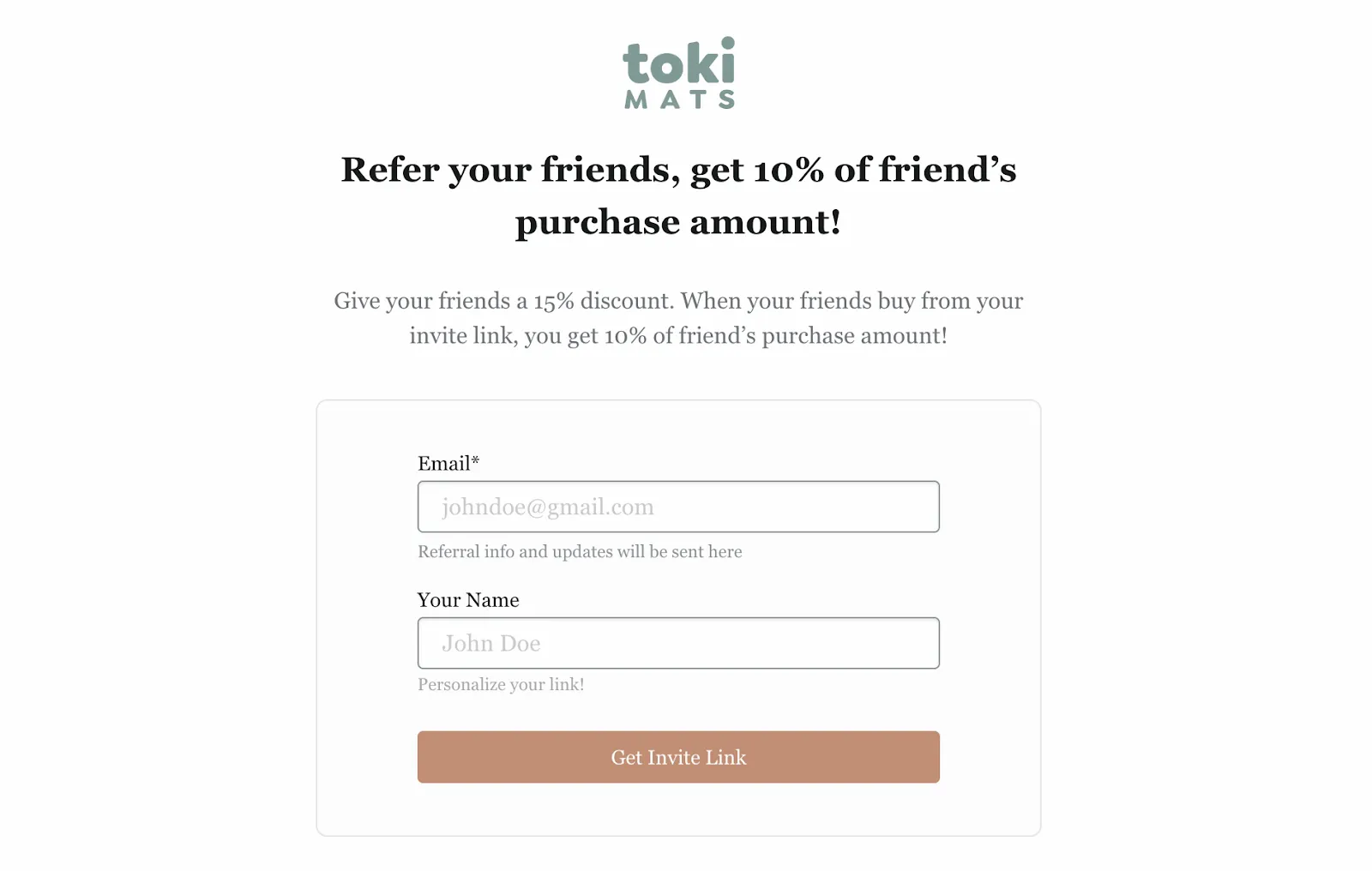
Toki Mats sells high-quality and non-toxic play mats and other play gadgets for babies and toddlers. Their refer-a-friend program gives the friend a 15% discount and the advocate receives 10% commission on the friend’s purchase amount.
Toki Mats used ReferralCandy to launch the campaign and they we’re able to generate over $500,000 in referral sales and the campaign generated 41X ROI. This proves the power of refer-a-friend campaigns accompanied by the right messaging and product.
If you want more comprehensive look into how Toki Mats pulled this out, we have made an entire case study on their campaign.
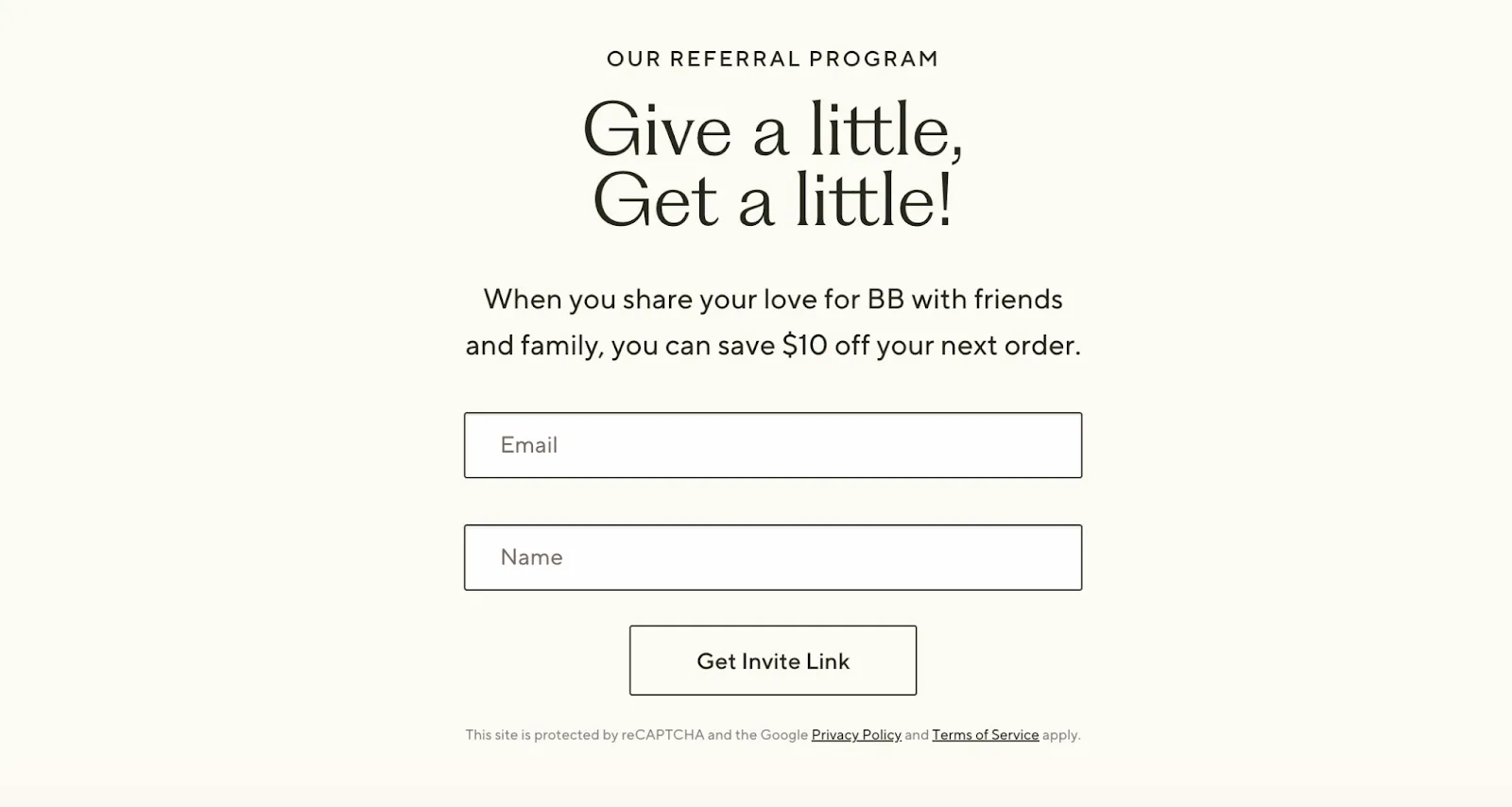
Similarly to Three, Branch Basics uses cash rewards as part of its refer-a-friend campaign. This is a great example of a simple referral campaign that brings great results. Branch Basics promises both the advocate and the referred friend $10 off on their next purchase.
If you want to implement a similar referral strategy, you can make the total amount smaller or higher, depending on your product price. If you use referral software, such as ReferralCandy, it’s easy to change the total amount!
Branch Basics also explains the referral program down below in simple steps:
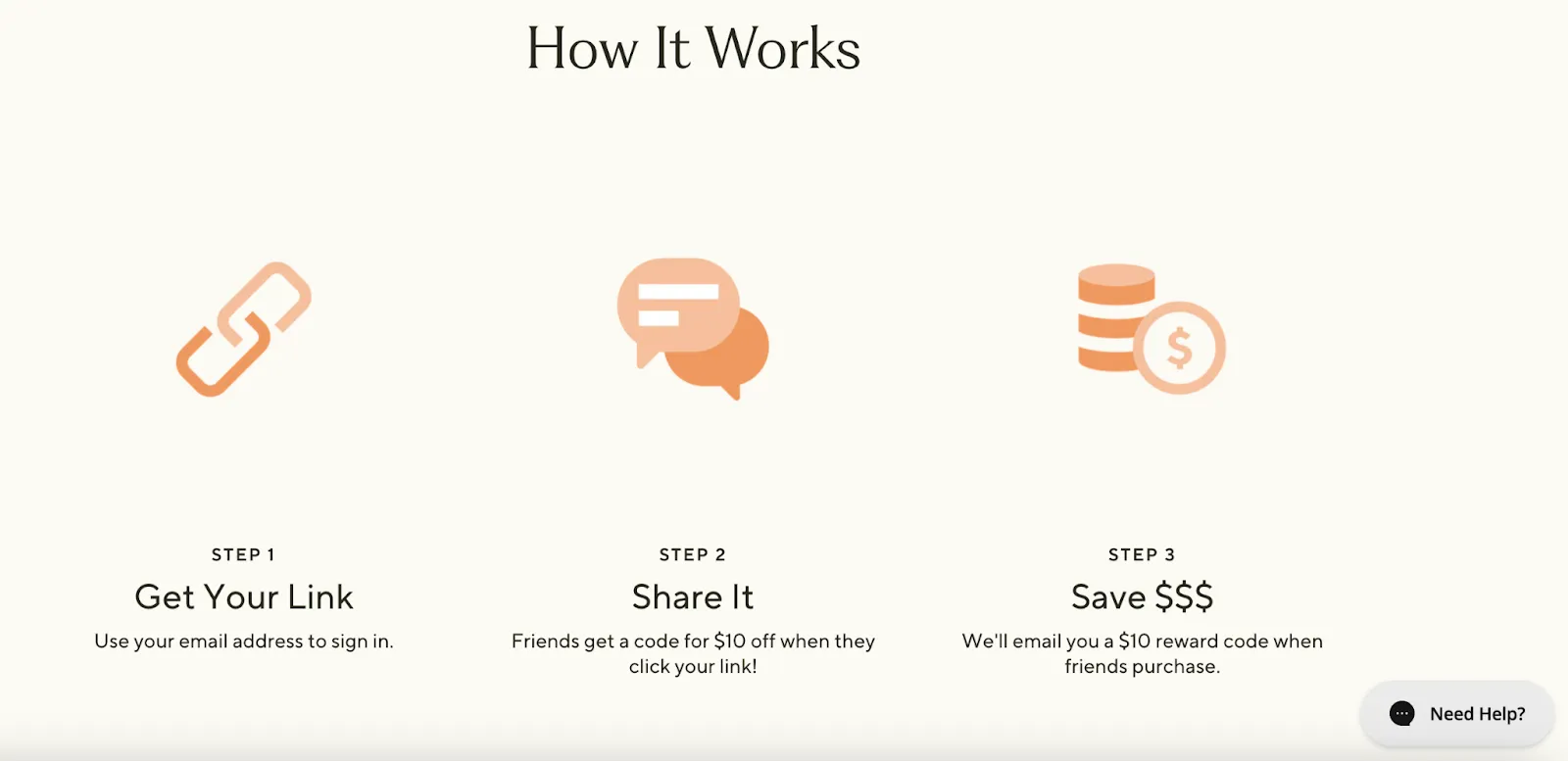
As you can see, Branch Basics makes it extremely easy for customers to understand how the referral campaign works, which is one of the reasons it’s so successful.

Dia & Co uses cash rewards as part of its referral program. Compared to many other brands, they’re quite aggressive with the amount of money they offer. For each successful referral, the advocate and the referred customer both get $25 coupon code.
If you have more expensive products you sell, you can also offer as high cash rewards as Dia & Co does. If you sell more cheap products, we recommend offering a lower cash reward, such as $10.
An interesting thing Dia & Co also promises is Dia Rewards for the future purchases friends and family make. This is a great way to keep customers and friends loyal to the brand since the incentive isn't just a one-time thing.
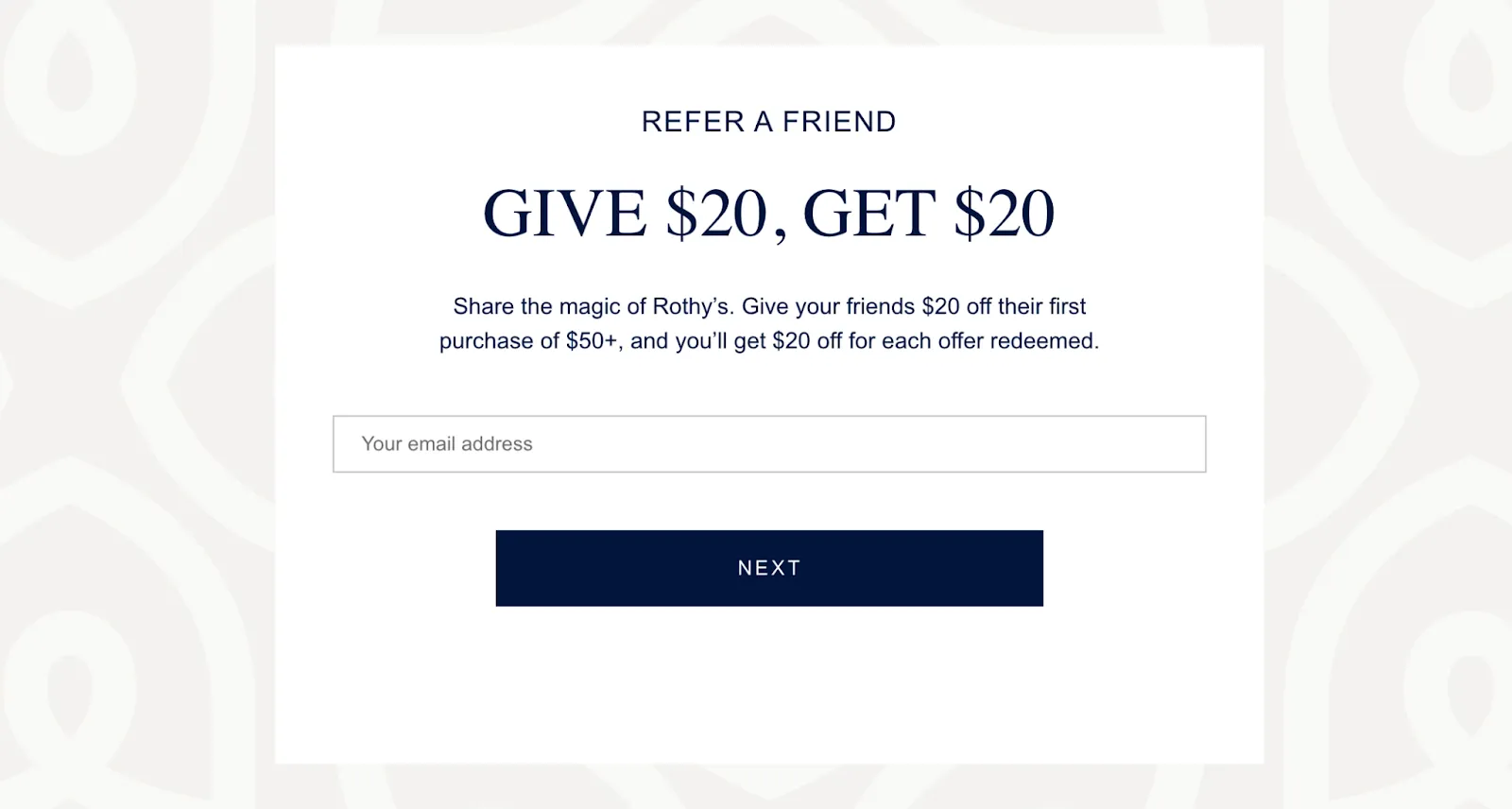
Rothy's is an American-based ecommerce brand known for its sustainable fashion products. Rothy’s uses a basic Give $20, Get $20 referral structure that rewards both the advocate and the friend.
What we like about this example is how simple their referral program is. The cash reward incentive is written right into the headline, and the signup form is as simple as it can be. Similarly, you shouldn’t try to complicate your own referral program, especially if you’re just starting out.
It is also worth noting that Rothy’s promises the $20 referral reward only whenever the total purchase exceeds $50+. This way, customers who purchase cheap products can’t take advantage of the referral program, which is what Rothy’s wants in this case.
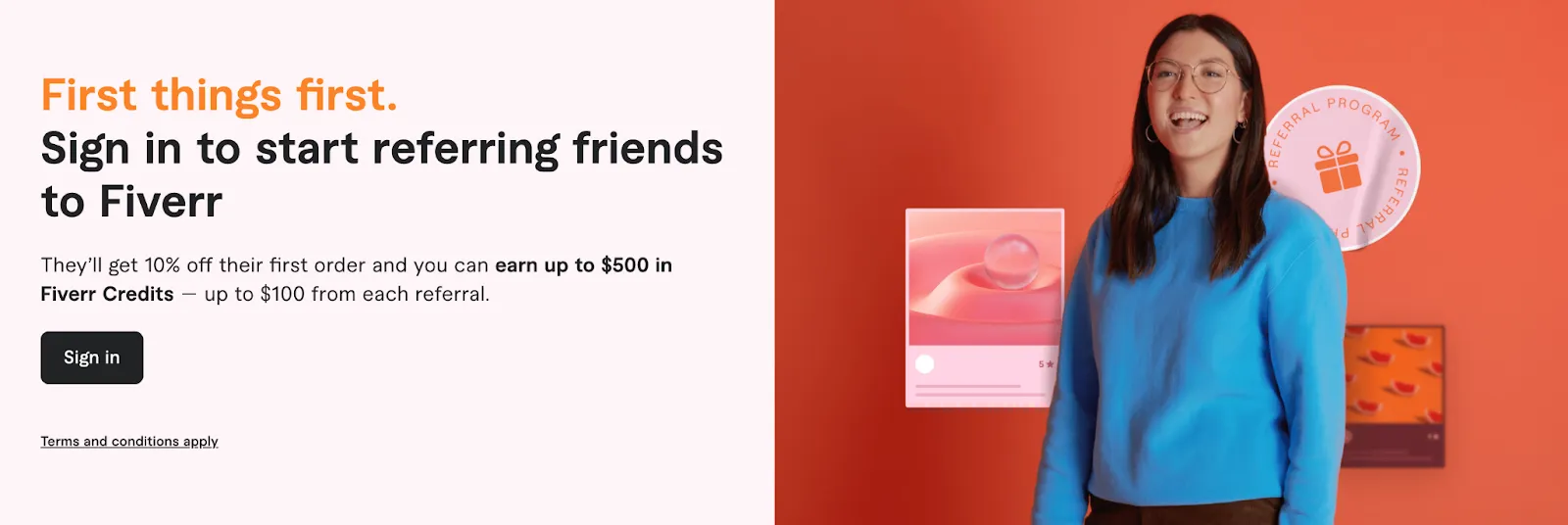
Repeated referral incentives allow advocates to continue referring friends and family even after the first referral. There is usually still some limit, but it is more than one referral, which some companies limit it to.
For example, Fiverr promises that an advocate can earn up to $500 in Fiverr Credits and $100 from a single referral. The friends who get referred receive 10% off their first order, so it’s a win-win.
This encourages ongoing engagement and can lead to a steady stream of new customers for the brand. In a similar way, you can promise advocates continuous rewards if they keep referring new customers.
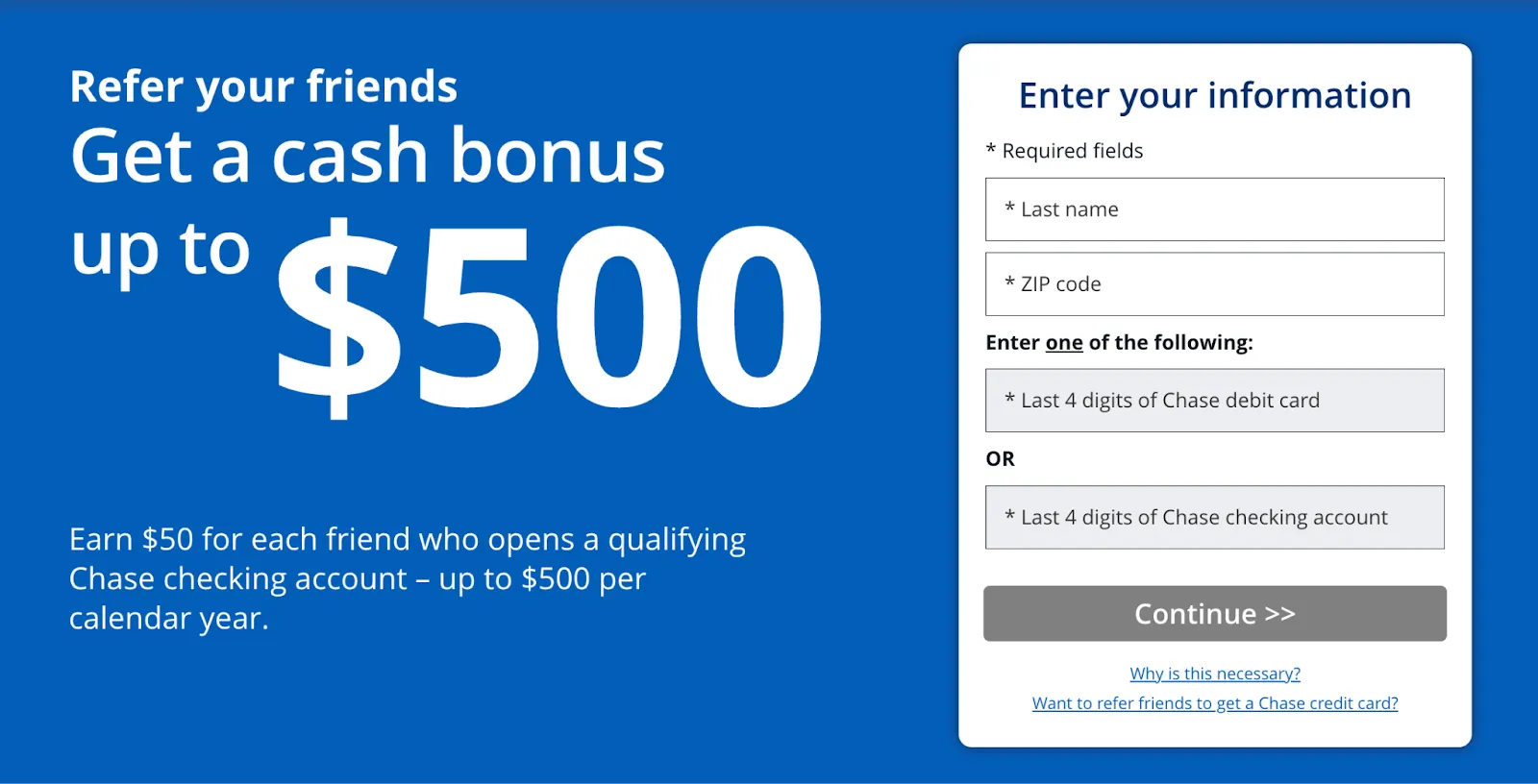
Like Fiverr, Chase Bank uses a repeated referral incentive strategy and promises $50 for each friend who opens a qualifying Chase account. Unlike Fiverr, referrals can refer up to $500 per calendar year, and then the amount resets.
Chase Bank uses spacing extremely well on its refer-a-friend landing page. The text ‘Get a cash bonus up to $500’ takes up the most space, which is good since the incentive encourages customers to refer friends and family.
While Chase Bank isn't an ecommerce brand, the same strategy can be applied to them. You don’t have to promise as much as $50 for each successful referral, but even a smaller amount, such as $10 for a successful referral, can work just as well.
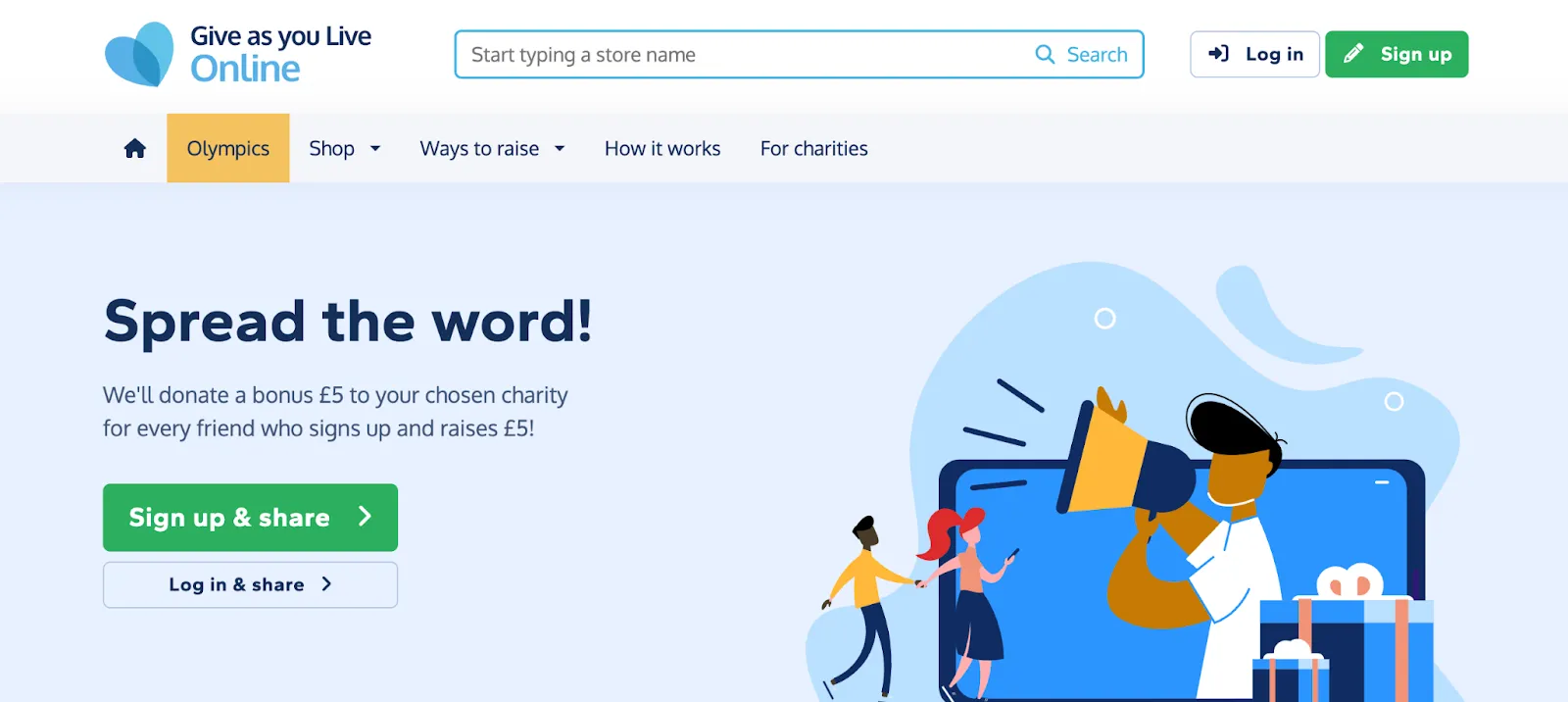
Give as you Live is a UK-based fundraising platform for nonprofits that allows users to raise money for their chosen charities by purchasing products from their website. They use a charity donation referral incentive, which means that for every referred friend, they donate a specific amount of money to charity.
Give as you Live promises to donate a bonus of £5 to your chosen charity for every friend who raises £5. As you can see, the cash amount is smaller than many other brands have, proving that even relatively small amounts (such as £5) can be extremely effective.
We recommend charity donation incentives for brands that are driven by a mission. For example, if you would sell turtle bracelets, you could partner with a marine conservation organization to donate a portion of each sale to turtle conservation efforts.
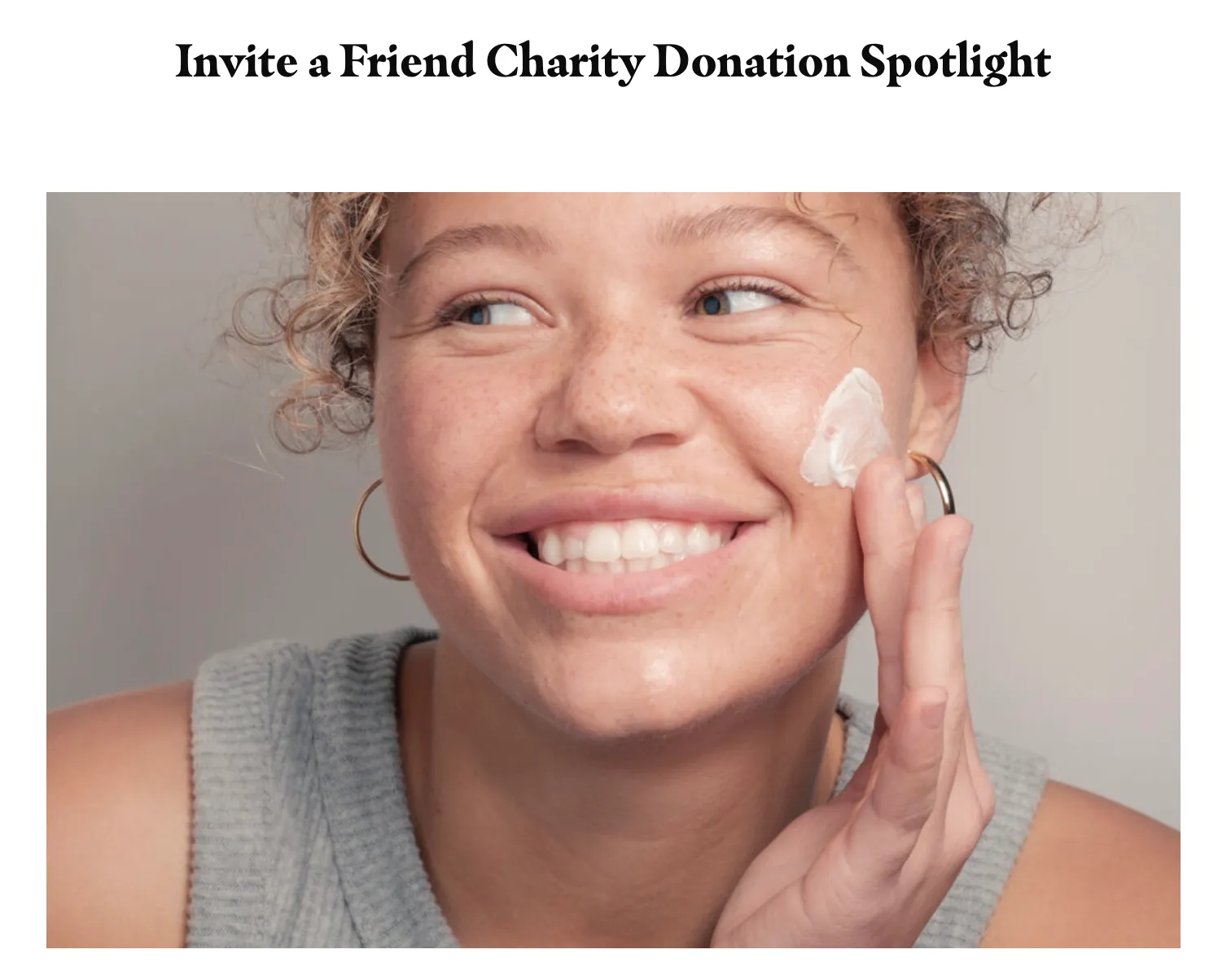
Skin+Me is a skincare brand that offers personalized solutions based on an individual’s unique skin needs. For its refer-a-friend campaign, it uses a charity donation incentive.
What’s interesting about it is that Skin+Me customers can decide whether to donate £10 or to get a £10 credit on their account. This is great because some customers might want to use it on their next order, and some might want to donate it to a good cause.
Skin+Me also clearly outlines the charities they work with, one of which is an organization working to limit the fear cancer can cause. Their brand is driven by a mission (to solve skin problems through personalized solutions), which makes skin cancer charity donation
a natural fit.
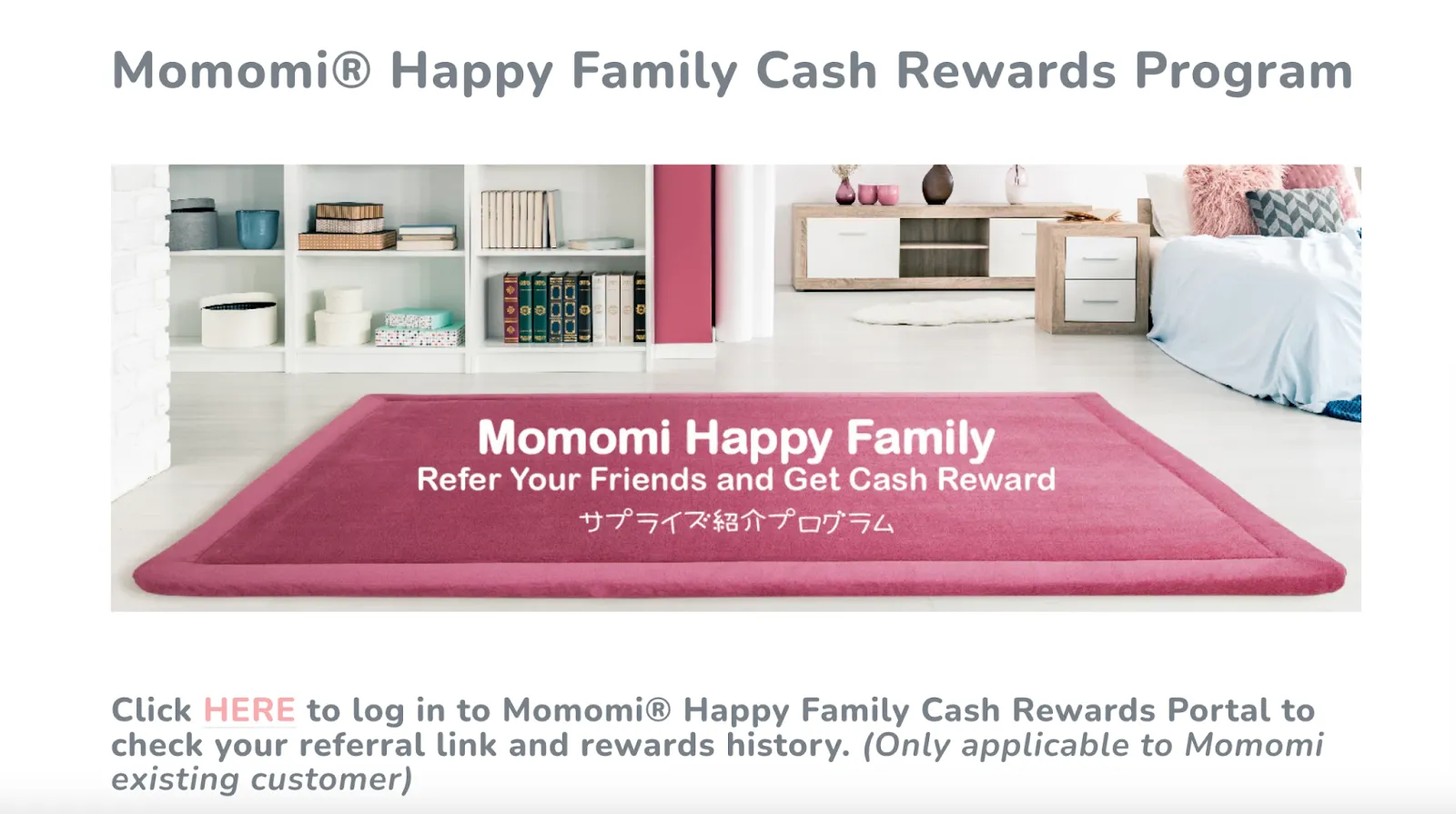
Momomi is a skincare brand that focuses on producing high-quality and natural skincare products. Momomi rewards advocates by sending them 5% of the purchase amount directly through PayPal.
The direct PayPal cash payments offer advocates a strong incentive since they can earn money directly to their bank accounts, which sounds appealing. Momomi used ReferralCandy in this campaign and made over $100,000 in referral sales, with 1 to 5 transactions being referral sales. This just proves how successful the campaign was for them!
If you want to set PayPal cash payments for your own referral program, you can do that with ReferralCandy. From the ReferralCandy settings, you can decide how advocates get paid, and PayPal is one option.
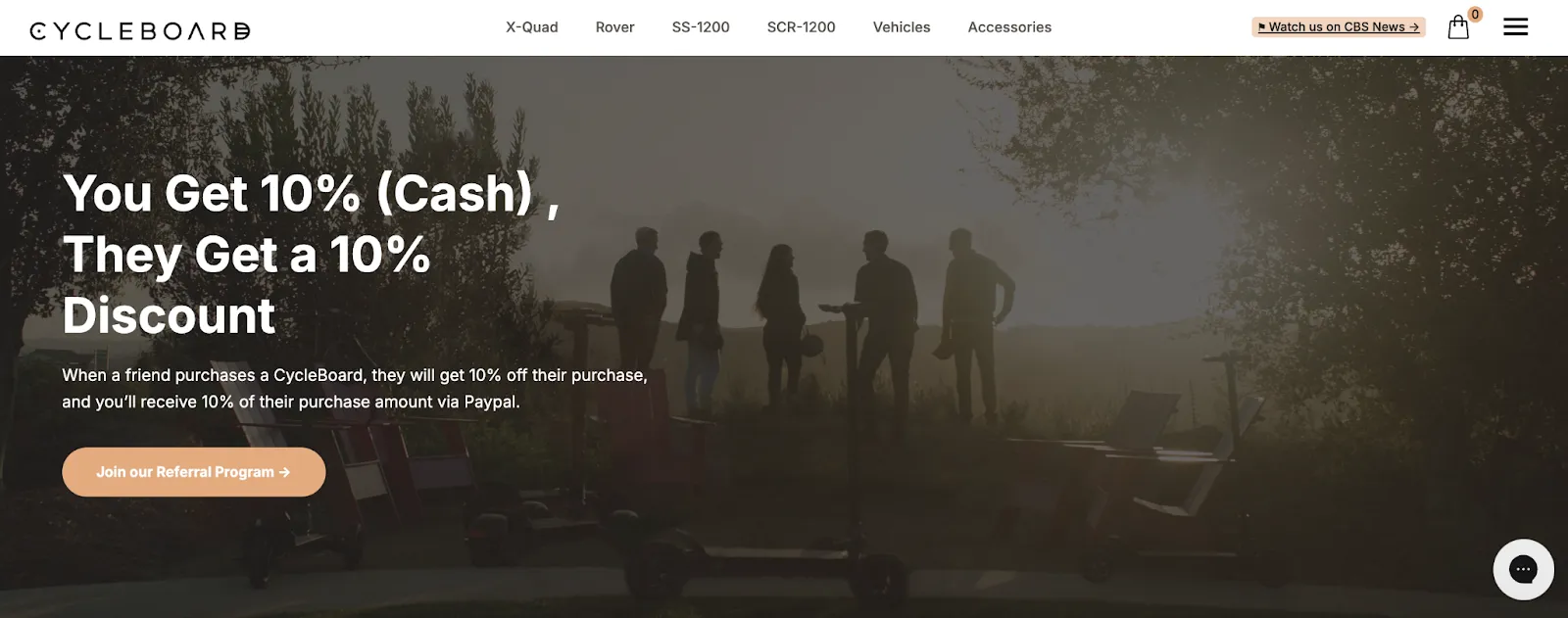
CycleBoard designs and sells electric and self-balancing scooters. Similarly to Momomi, in their referral program, customers are promised 10% of their friends' purchases via PayPal cash payments.
CycleBoard uses ReferralProgram for this campaign, and they’ve generated over $700,000 in referral sales and referrals we’re responsible for 9.5% of all transactions. Since the referral software is practically the only expense, the ROI of the campaign is extremely high.
We can recommend direct PayPal cash payments in almost any niche since they have been proven to be effective. If your product is more inexpensive, you can offer lower cash payments, like Momomi (5% of the total purchase amount).
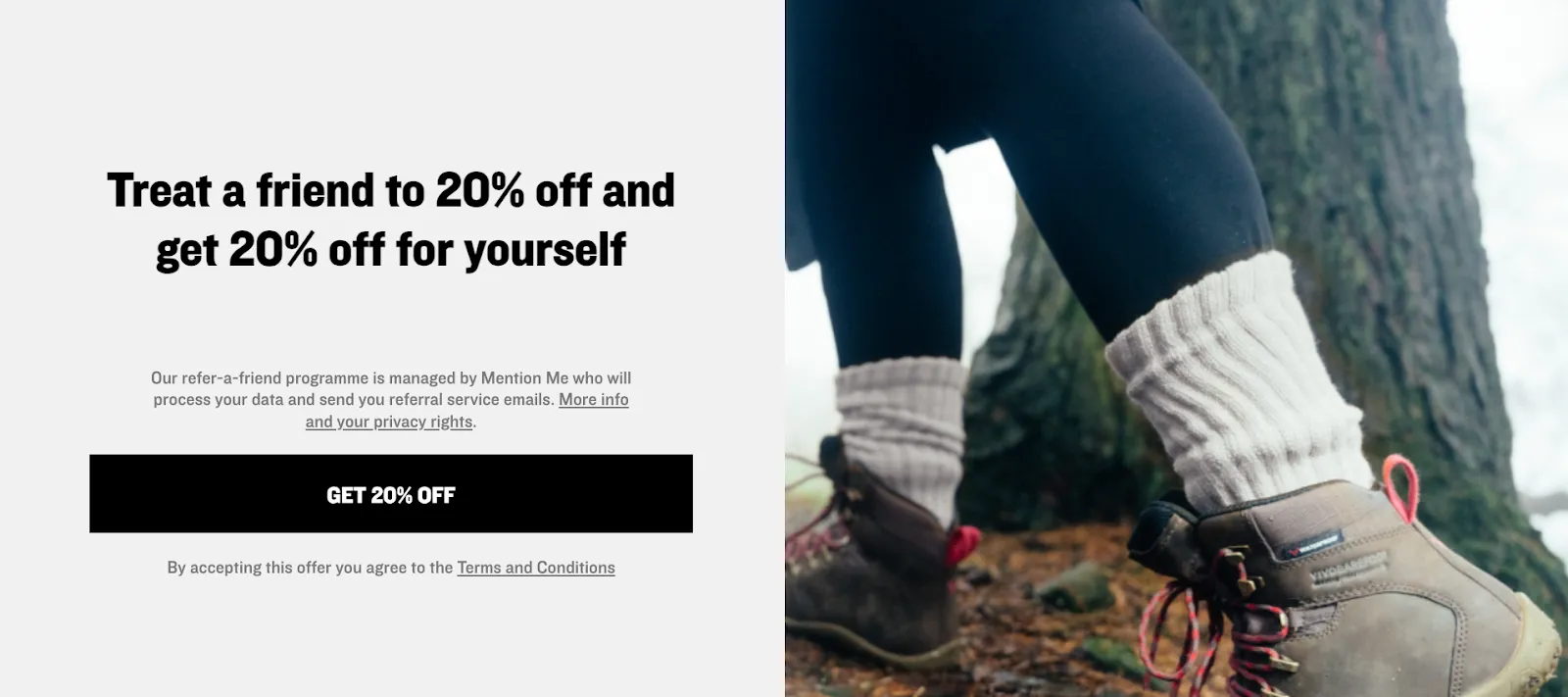
Vivobarefoot is a footwear brand known for its minimalist and barefoot-inspired shoes. They use a popular store discount incentive, where both the existing customer and the referred friend receive a discount code for the store.
Vivobarefoot specifically promises 20% off for friends and 20% off for advocates. Most of the Vivobarefoot products are priced over $100 per product, so this is quite a significant discount.
If your profit margin doesn’t allow you to offer as big discount, you can also settle down with smaller amounts, such as 5% or 10%. This is another refer-a-friend idea that can be implemented in almost any niche using referral software like ReferralCandy.
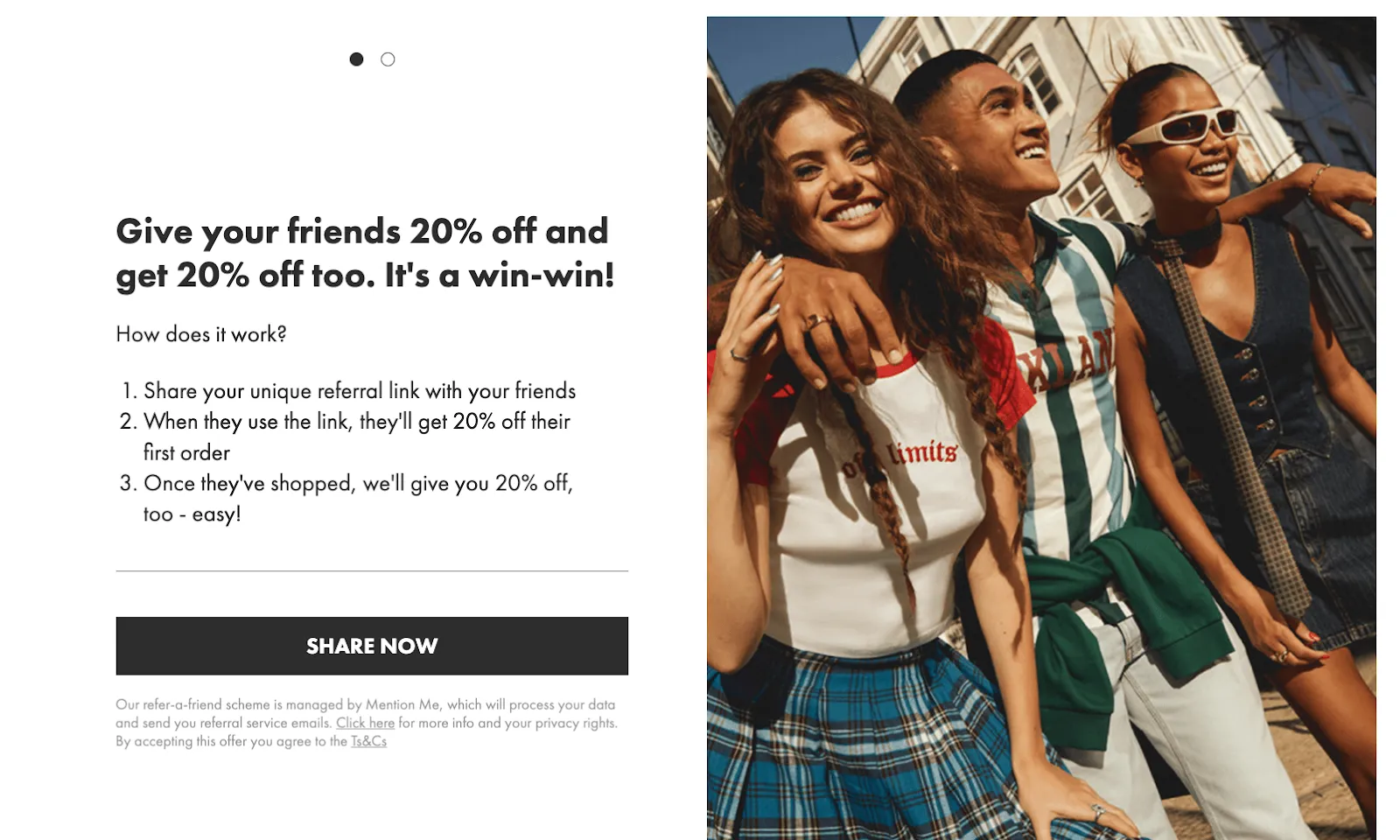
ASOS is one of the leading online fashion and beauty retailers and uses store discounts. As part of its refer-a-friend program, ASOS offers both the advocate and the friend 20% off for a successful referral.
One thing we like about how they’ve done their campaign is how simple it is. On the referral landing page, they outline the three different steps that are required to take. Plus, the CTA button is simple (Share Now) and located correctly.
If you want, you can implement similar referral program and even use the same store discount (20%), or switch it to your liking. The store discount amount can easily be changed in a referral program software, such as ReferralCandy.

Similarly to ASOS, UNTUCKit uses a store discount incentive, where they promise 25% off for the advocate as well as for the friend. It’s more than ASOS offers, and it’s also beyond what brands usually offer.
UNTUCKit keeps the referral page simple, and the left side includes a brand-related image. The sign-up form is extremely straightforward, with only an email address and a 'Next' button for adding more information.
If your products are high-ticket, you can offer as big an incentive as UNTUCKit does (25% off). However, we don’t recommend offering such a high discount for more inexpensive products, as this will significantly hurt your profit margins.
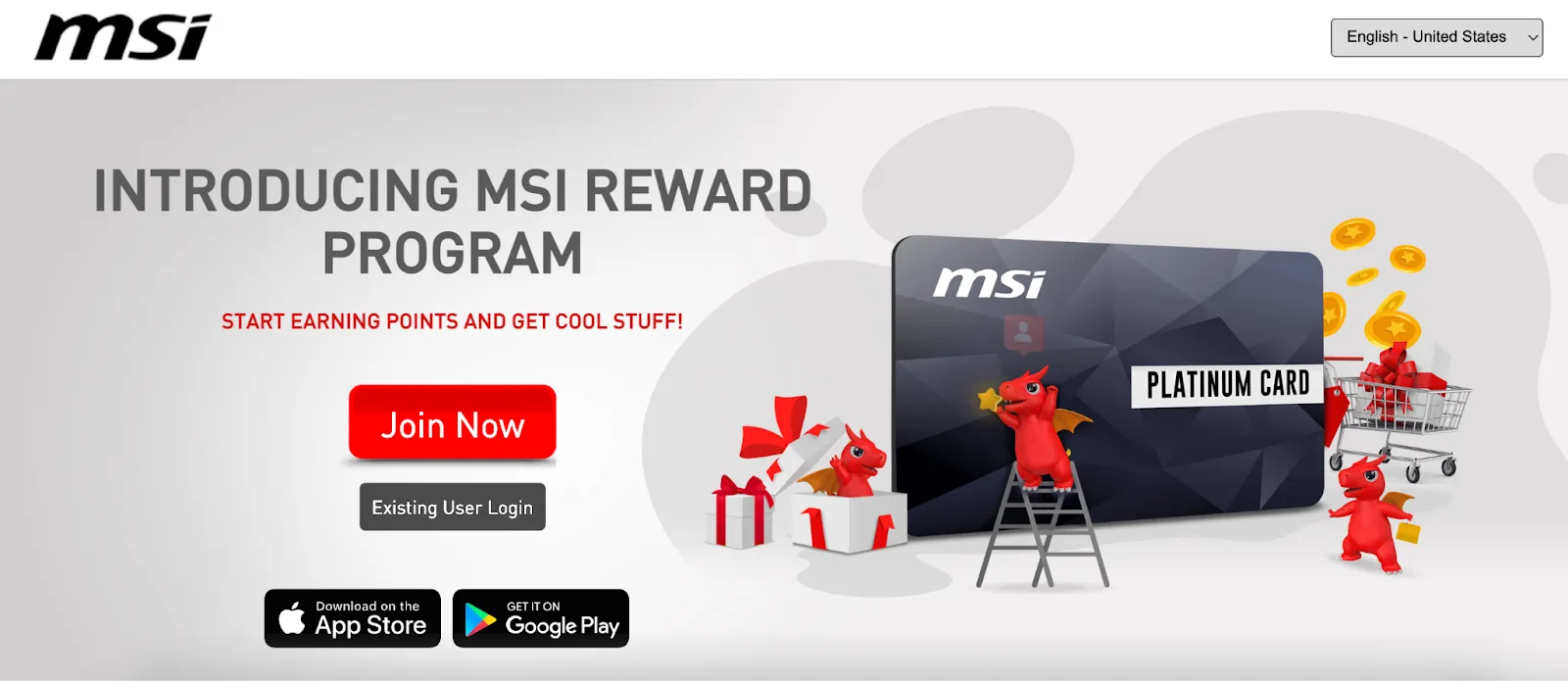
MSI is an IT company known for providing computer hardware and electronics. They have a great example for tiered referral rewards, which means customers can earn increasing levels of rewards based on the number of successful referrals they make.
For example, referring three friends earns a game subscription, while referring five friends earns a Roblox gift card. Tiered referral rewards are great for customer loyalty since you can be sure they’ll stick around for longer as they’re continuously rewarded.
MSI divides its referral rewards into three categories: games, vouchers, and wallpapers.
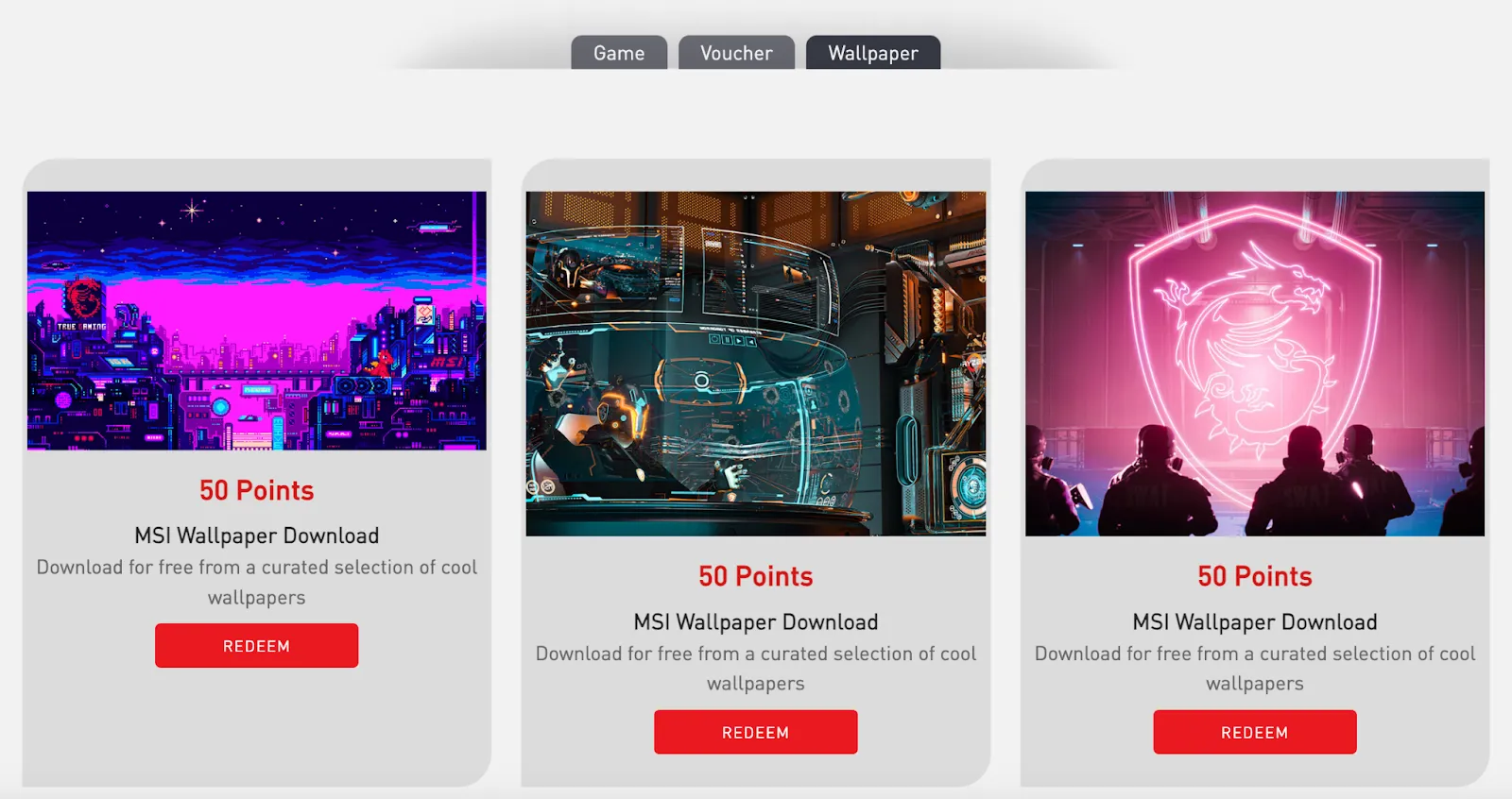
This is a great way to appeal to a larger group of people. The group that likes games might not like vouchers and vice versa.
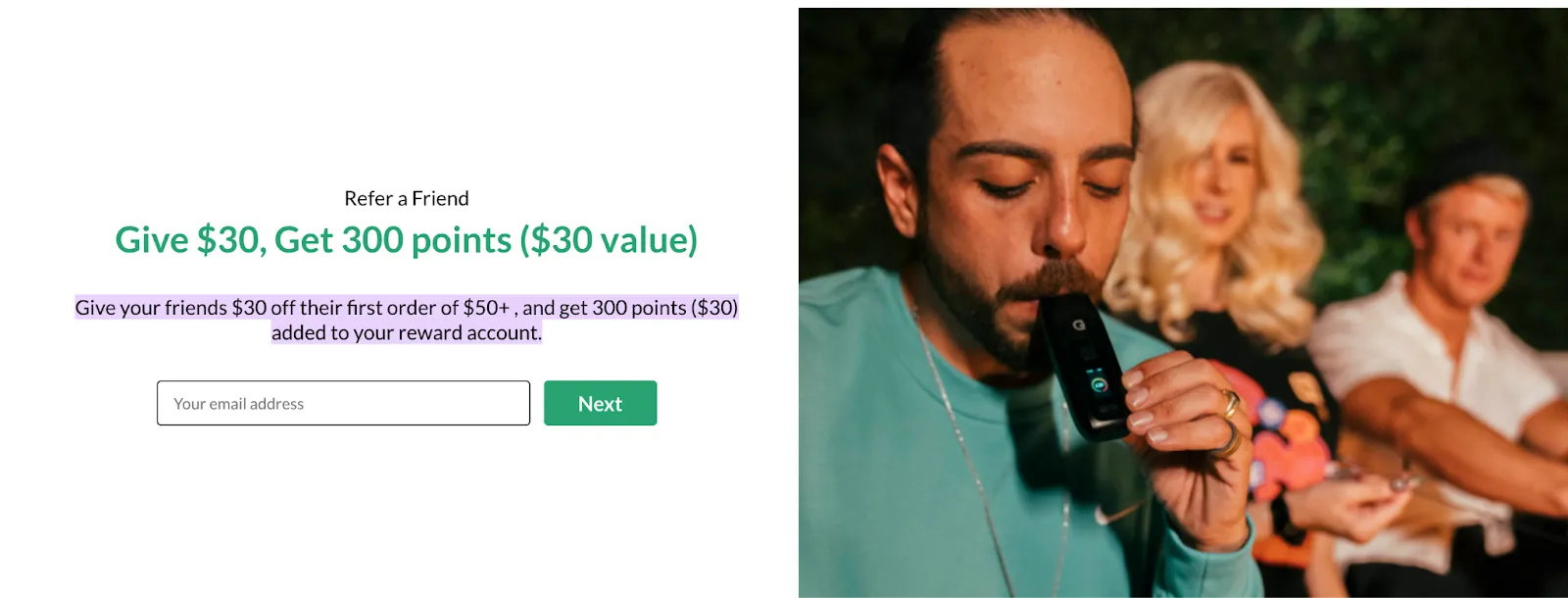
G Pen is known for its high-quality products for vaporizing herbs, concentrates, and oils. As part of its refer-a-friend program, G Pen uses a store points system, where customers earn points for the store for each successful referral. The more points you gain, the more you save on your next purchase.
On the referral page, G Pen explains in simple terms how the store points can be used:
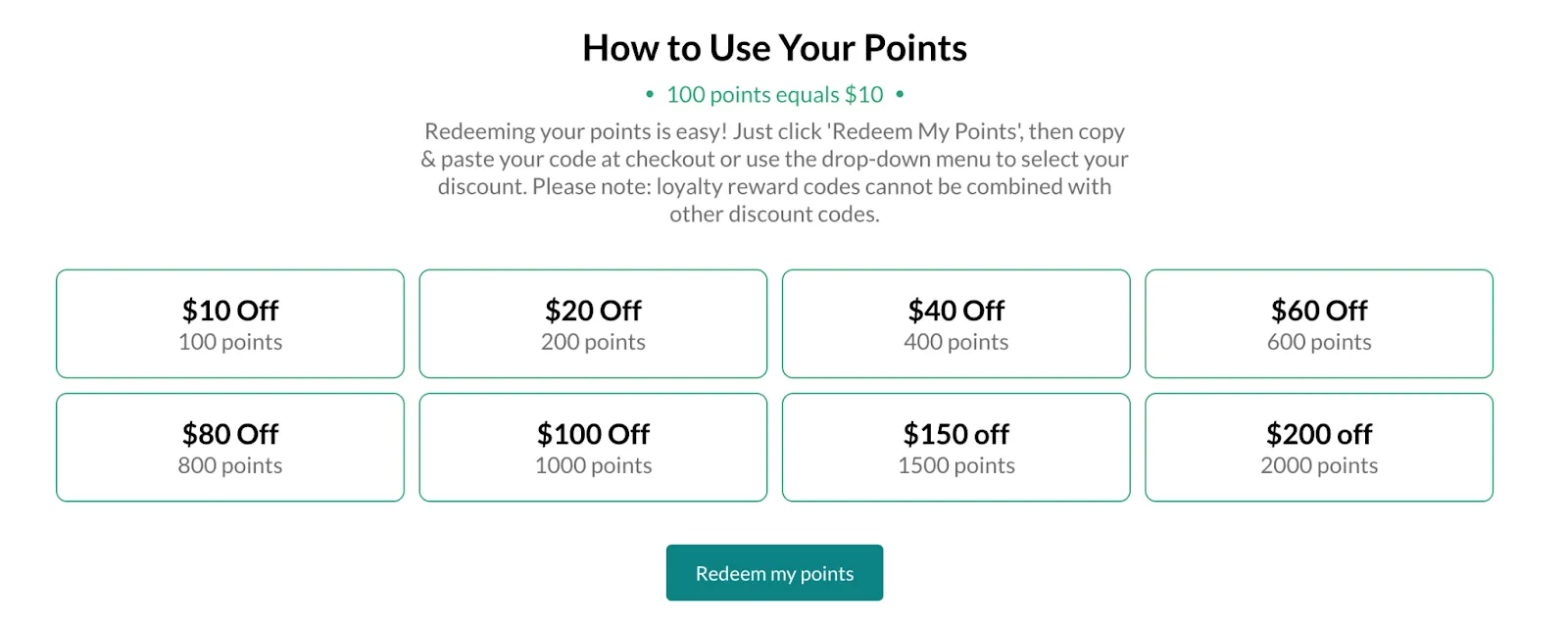
They also bring in gamification elements by providing additional ways for collecting points, such as by creating an account, leaving a review, and sharing the brand on social media.
We also like their referral page's large FAQ section, which answers various customer questions.

Especially for referral programs that are a bit more advanced (such as G Pen has), FAQ sections can be a great way to proactively help customers.
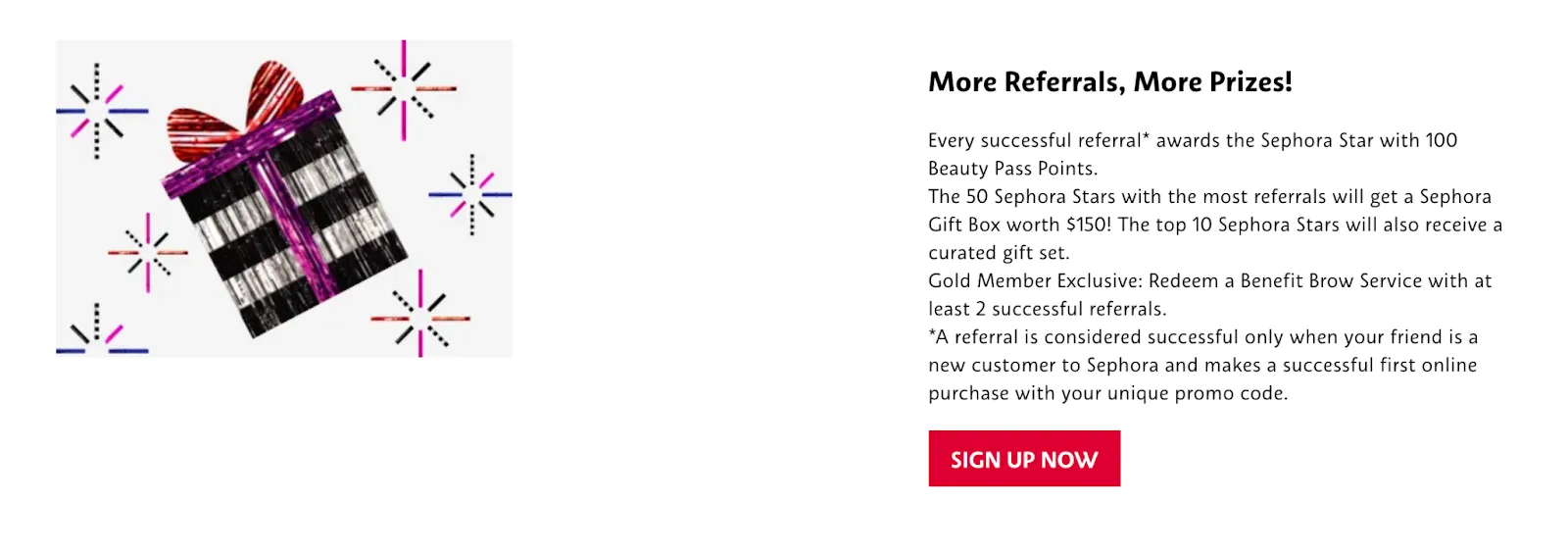
Sephora is a beauty retailer known for its extensive range of cosmetic, skincare, and haircare products. Sephora has a referral contest campaign, where the more referrals advocate makes, the better prices they make.
The top 50 Sephora stars get a gift box worth $150, and the top 10 referrals get an even bigger curated gift set. What’s interesting about their referral program is that it’s one-sided, and the referred customers don’t get rewarded. This is quite rare amongst referral programs but seems to work well for Sephora!
Sephora even has a link to the leaderboard for the customers who have made the most successful referrals. Overall, it’s a great example of how to include gamification and contests in referral programs.
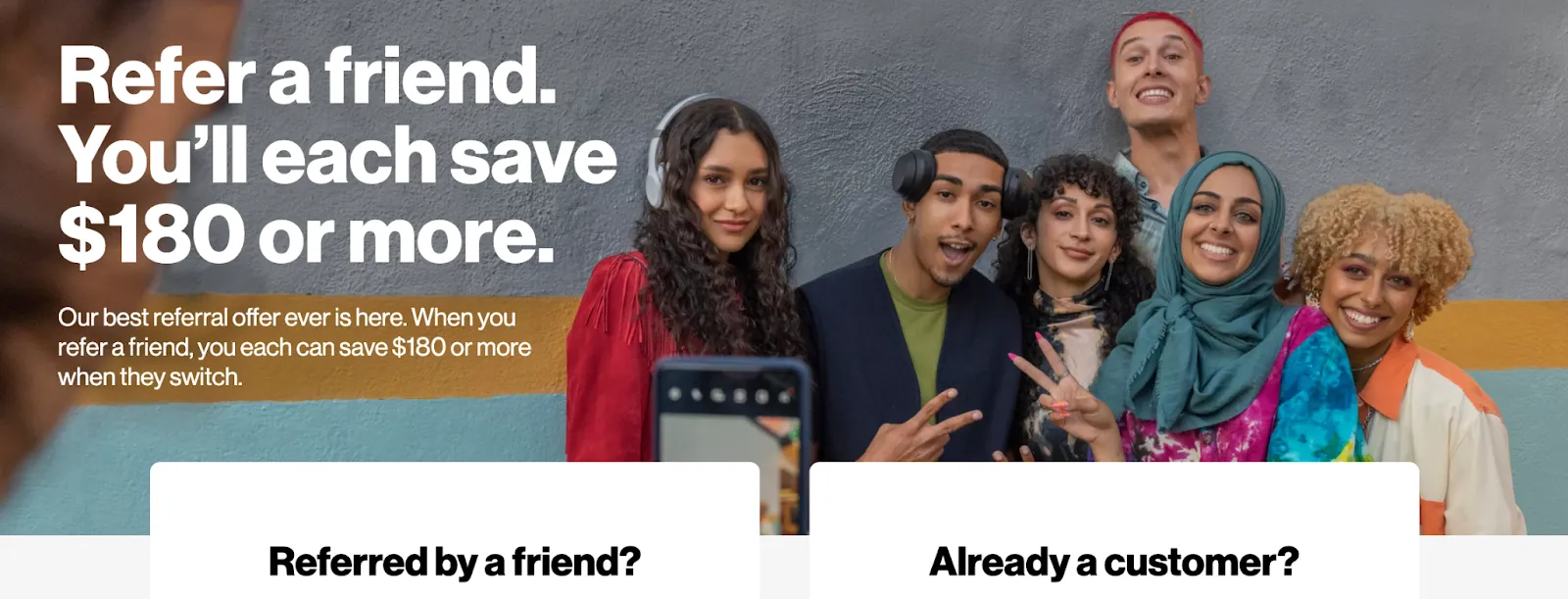
Verizon uses a membership product discount incentive where they promise that the advocate and the friend will both save $180 or more. The cash reward will be deducted from the monthly/yearly subscription of Verizon, and they clearly explain this under the main section:
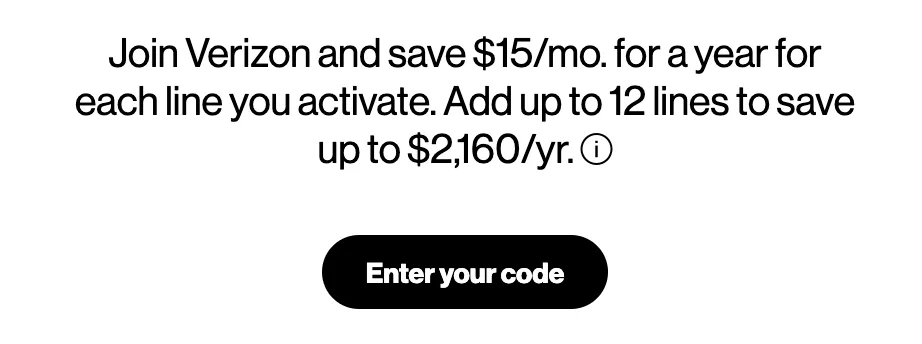
If you sell membership products, this can be very beneficial. For example, an ecommerce brand selling monthly beverage packages delivered to home could implement a referral program strategy similar to Verizon's.
If you’re a regular ecommerce brand selling physical products normally, this may be more hard to implement.
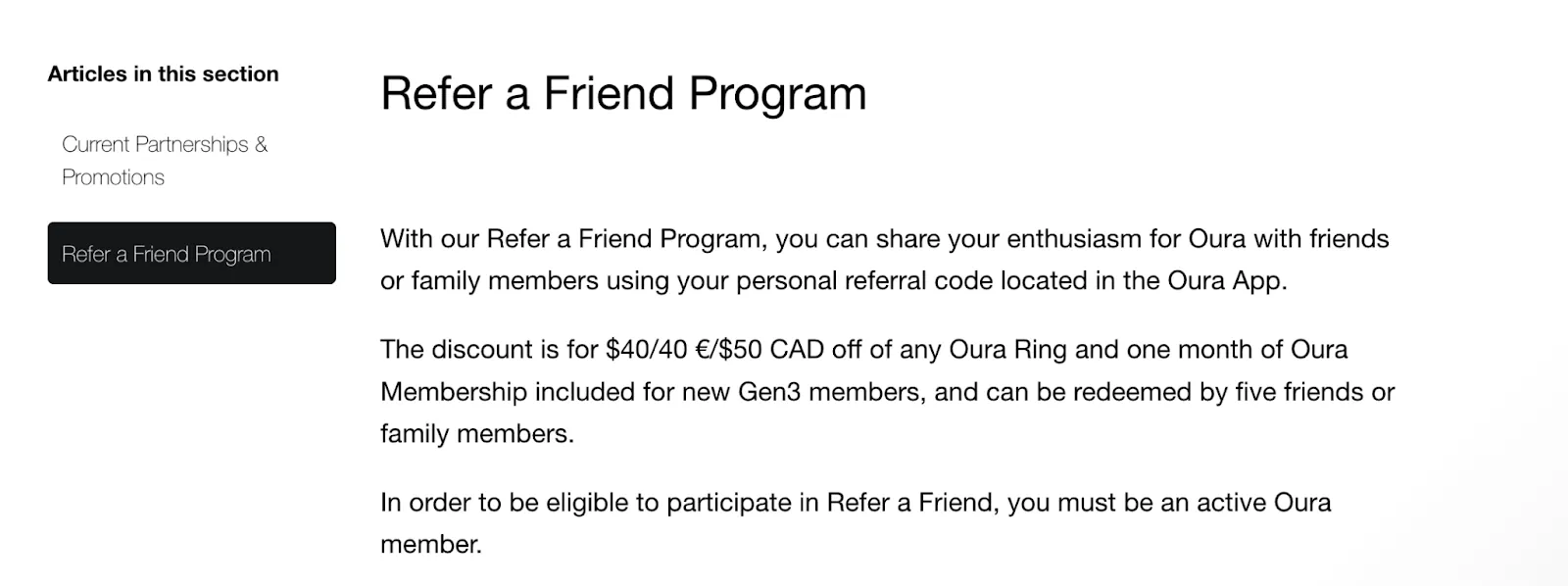
Oura is known for its Oura Ring, a smart ring designed to track and analyze various aspects of health. As part of its referral program, Oura promises a free monthly membership for each successful referral, as well as $40 off of any Oura Ring.
The referral structure is one-sided and the advocate doesn’t get rewarded, only the friend or family member. Most Oura products are over priced at over $300, so Oura is able to offer such big referral incentives for customers.
An interesting aspect of Oura’s referral campaign is that customers can make a maximum of five referrals. Overall, if your product has a monthly membership, you can implement a referral structure similar to Oura's.
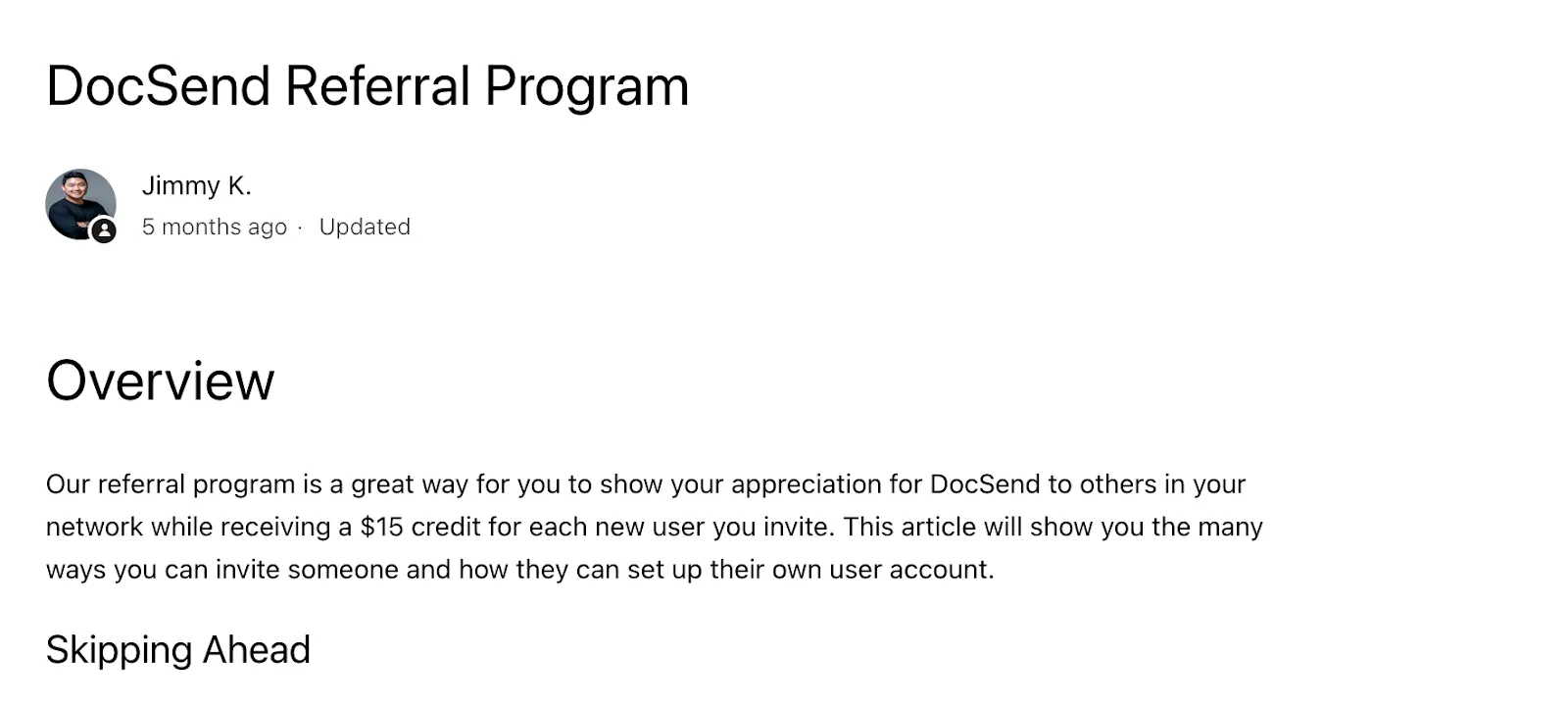
DocSend is a document-sharing platform that allows users to securely send and manage documents. DocSend referral program offers a $15 credit for every successful referral, which will be automatically deducted from the recurring monthly plan fee.
DocSend also gives the advocate’s friend $15 off for their first monthly plan and clearly outlines that non-USD users will get the one-month equivalent of DocSend personal.
To implement a similar refer-a-friend program, you should have a SaaS product or a monthly subscription for your physical product. You can then conduct a Cohort analysis to determine the effects of free trial periods or discounts on user retention, which are aspects that can be managed automatically by using SaaS subscription billing software. You can also reduce the credit from the product price, which is popular for ecommerce stores.
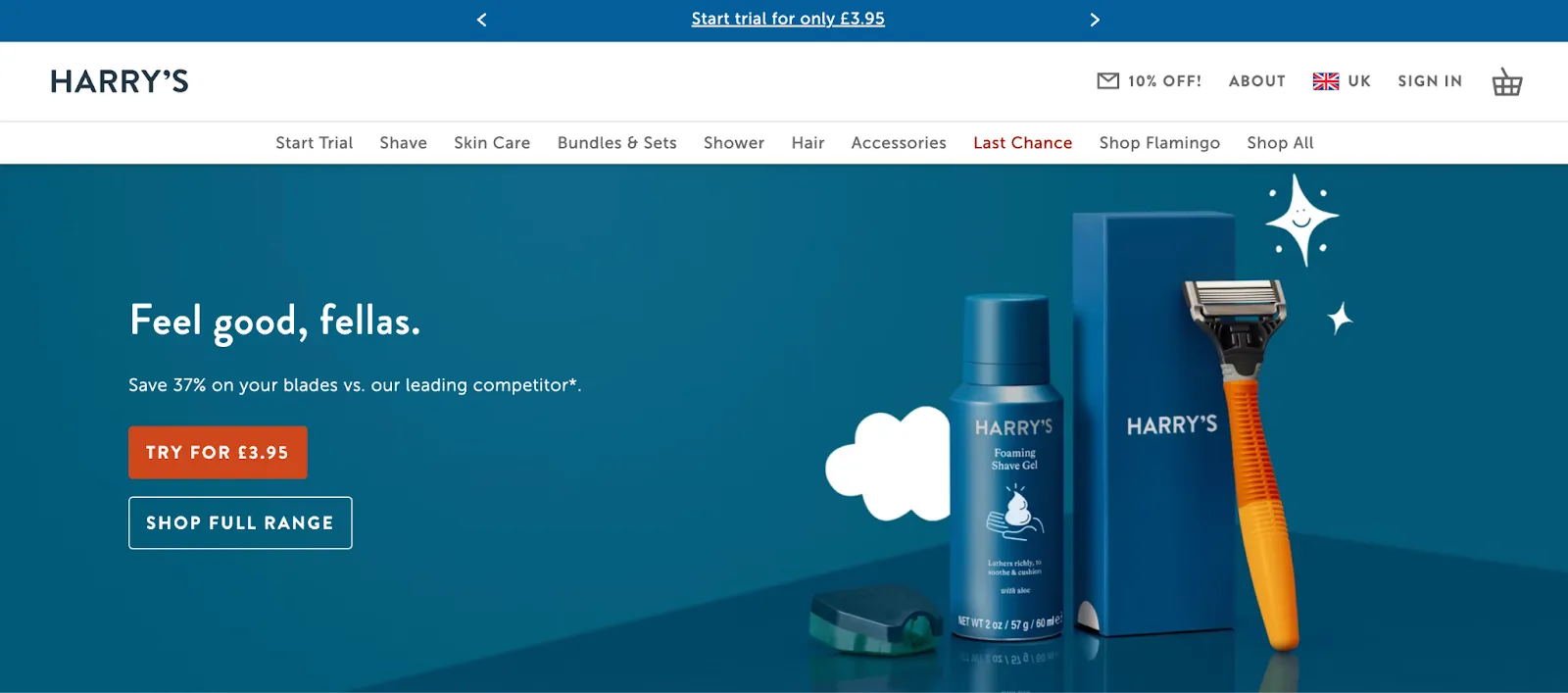
Harry's offers men's personal care products at a lower price point than many competitors, making it an attractive option. As part of their launch program, they used free products as an incentive to create one of the most effective referral program launches.
Harry's offered a "Milestone Referral Program," which offered instant prizes for referring a certain number of people. For example, you get a free shave cream if you refer five friends. This gamification aspect worked well for them, and they we’re able to collect 100,000 email addresses for the campaign in just one week.
To implement a similar refer-a-friend program, you can give reasonably priced products for free to customers who make successful referrals. In Harry’s niche (men’s personal care products), shaving cream is a product that every man needs and is inexpensive, which was a perfect match.
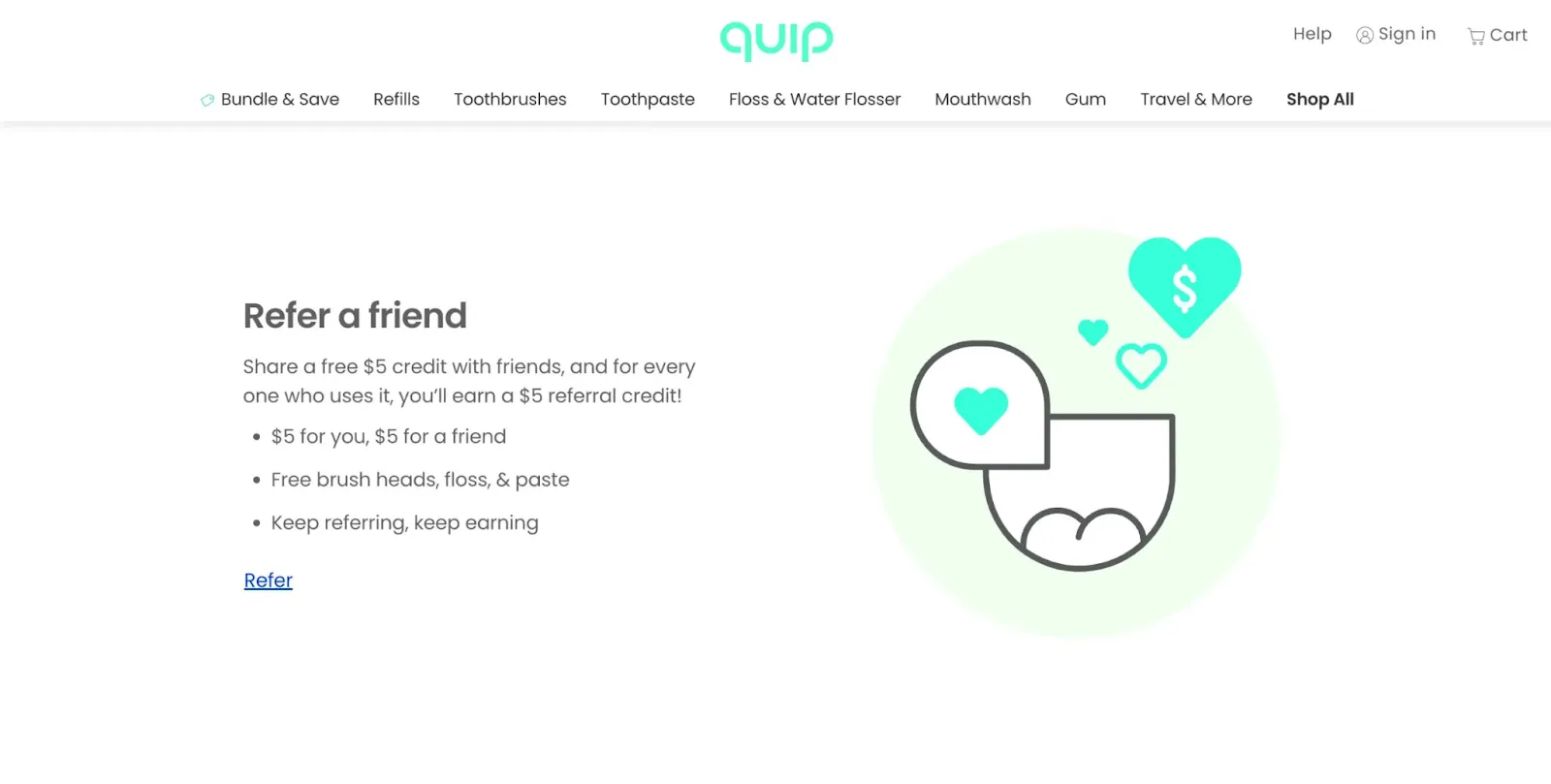
Quip is a productivity software that combines documents, spreadsheets, and chat functionality into one software. They give free products for every successful referral, as well as a cash reward of $5 for the advocate and $5 for the friend.
The free products are quite inexpensive, such as brush heads, floss, and paste. But still, free products are appealing to customers, which is one of the reasons the referral program works so well.
A similar referral program to Quip’s can be implemented in almost any niche. You can offer both the cash reward and the free products or just one of them. The top referral software, such as ReferralCandy, allows A/B testing between different variations, which we highly recommend for the best results.
Starting your own referral program can be broken down into five steps:
1. Get clear about your goals: Before starting your referral program, make sure you know what you want from it. For example, more customers, bigger purchases from existing customers, or a higher conversion rate all require a bit different referral programs.
2. Choose your referral incentive: Referral incentives encourage customers to recommend your products to their friends and family. To make a successful refer-a-friend program, make sure you use an effective referral incentive.
3. Make an outreach plan: Your referral program will most likely target your existing and new customers, so you should make a plan for reaching them. For most brands, email marketing is the best method, and the best referral marketing software can help you send emails automatically.
3. Select your referral program software: To start your own referral program, I suggest trying ReferralCandy. It offers all the necessary tools for a successful referral program and has a 14-day free trial!
5. Track the referral performance: Once you select a referral program, you can start tracking its performance. A/B test different variations and double down on what works.
If you want a more detailed look into how to start your own referral program, take a look at our comprehensive referral program guide here.
Building your own referral program can feel difficult, especially if you’re doing it for the first time, so hopefully these ideas we’re helpful to you!
If you still need further help, I’d highly suggest you read our guide on how to set up your referral program in 6 steps! It outlines the different steps involved, such as setting up your referral rewards, customizing referral emails, and analyzing the performance.
Referral program software is also needed to set up a referral program. These tools provide you with ready-to-use templates, automation capabilities, fraud protection, and analytics, all of which are necessary for you to succeed with referral marketing.
P.S. If you enjoyed reading this article and want to grow your ecommerce store, subscribe to our newsletter to get our latest articles and roundups.
Ready to start your own campaign? Compare our referral software pricing plans and find the plan that best fits your business goals.
Hey, I'm Elmeri Palokangas. I'm an e-commerce and online marketing specialist with over five years of experience. My expertise extends to various publications and companies, including WordStream, QuickMail, Scribe, Marketcircle, and Digital.com. When I'm not enjoying a cup of coffee and writing awesome articles, you can find me running in the nearby mountains.
Grow your sales at a ridiculously
lower CAC.